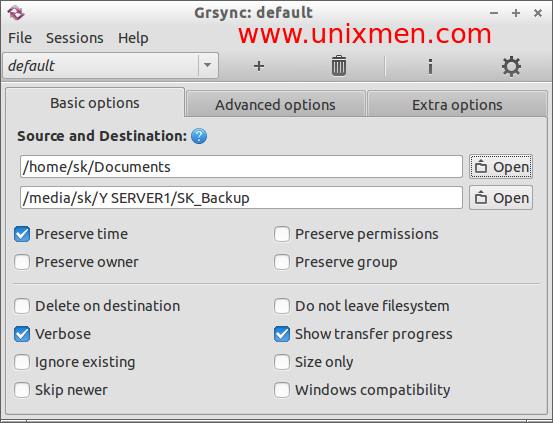

ssh / authorized_key) so i am 100% sure there is no mistake in this part.Īs for the host address, I'm using Public IPv4 address from my AWS Instance.įor the repository variables, I've checked and am sure there is nothing wrong with it as well after I compared it with the one on the pipeline file.Īs for your note, I've tried using the -rsync-path=/usr/bin/rsync, but nothing changed.
Uninstall grsync license#
pem file) and public key (the one from my remote machine. Instead, we recommend either our free Windows Backup Agent or pay for a BackupAssist license with the rsync module.wRsync is. To uninstall grsync and its dependencies that are no longer needed by Ubuntu 20. If Grsync 1.2.1 is frozen, you can press Cmd +Opt + Esc. It is a rsync GUI (Graphical User Interface). Before uninstalling Grsync 1.2.1, youd better quit this application and end all its processes.

I've also re-checked my repository SSH keys both private (the one from. Grsync is used to synchronize folders, files and make backups. Rsync is already installed on the remote machine I've also tried to re-install it a few times. I've checked the rsync on my remote machine and it's already installed. I've googled for a few days and tried some solutions, yet none of them helped me to fix my pipeline issue. Pipeline failed due to rsync command not found START /WAIT grsync.7z.exe x -o'C:\Program Files\Grsync' ECHO > ECHO > Creating Shortcuts. However, the pipeline failed due to bash: rsync: command not found. One can just manually remove the shortcut and delete the folder from program files, as the install.bat file is very simple: ECHO off ECHO > ECHO > Installing Grsync for Windows. I was trying to deploy a Next.js app to EC2 AWS (ubuntu) using bitbucket pipeline. With the ability to check what data is still the same, then append, remove or modify it as necessary to match the local source it can greatly reduce backup.


 0 kommentar(er)
0 kommentar(er)
